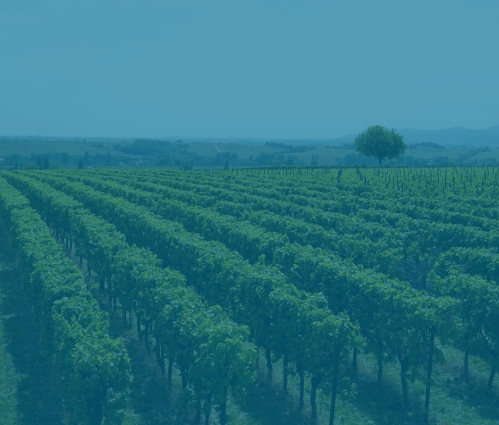- Environmental considerations are the number one reason why UK investors choose to invest in fine wine.
- Fine wine itself is facing the effects of climate change such as reduction in yields.
- Scarcity can drive demand and prices higher, but also lead to the broadening of the fine wine market.
Climate change and environmental considerations are the number one reason why UK investors choose to invest in fine wine, according to the results of our Global Wealth Manager Survey 2023. Over half (54%) of our respondents cited fine wine’s low carbon footprint as a key reason for adding it to their portfolio.
While there is a strong case why fine wine can be considered an ESG investment that is a good for the environment, fine wine itself is facing the impact of climate change. Like all agriculture, viticulture is at the mercy of the environment, making climate change a pressing issue for wine investors.
Changing weather patterns affect wine quality and quantity – two of the main factors that can make an investment profitable.
How changing weather patterns affect wine quality and quantity
In general, climate change can lead to alterations in grape ripening cycles, water stress, diseases and pests, and can affect berry size and composition.
Rising temperatures can cause early ripening, potentially disrupting the balance of sugars, acids and tannins – factors crucial for the quality of the wine and its ageing potential. Meanwhile, drought and irregular rainfall can lead to excessive water stress in the vines, affecting fruit development. Warmer temperatures can also bring new pests and diseases to regions previously unaffected, while heatwaves can cause grapes to sunburn, reducing yield and quality.
For instance, in 2023, two of the main fine wine producing countries, France and Italy, faced diverse weather patterns. France’s 2023 wine harvest projects between 44-47 million hectolitres, benefiting from potentially strong yields in Champagne and Burgundy. Italy, however, might see up to 14% reduction in yields due to extreme weather, marking it among its smallest harvests.
What does this mean for fine wine investment
Smaller harvests lead to reduced supply, and assuming that demand remains constant or increases, prices tend to rise. When news of a small harvest breaks, especially from a reputable wine-producing region, it can create a buzz in the trade. Buyers and collectors might perceive wines from that harvest as more valuable or unique, driving up demand and, subsequently, prices.
Moreover, a smaller harvest doesn’t necessarily mean reduced costs. Wineries still have to maintain vineyards, pay labour, and cover all production expenses. With fewer bottles to sell, the cost per bottle increases, which can result in higher prices for the consumer.
Supply and demand
This is a particularly pertinent question for regions, where scarcity is the main driver behind their investment appeal such as Burgundy. A recent example was the 2021 Burgundy En Primeur campaign, which saw drastically low volumes. The Bourgogne Wine Board (BIVB) pointed to a crop of 900 to 950,000 hectolitres, representing about 50% of a normal year and 2/3 of the average in recent years.
As a result, allocations were low and release prices were up 25% on average. This stimulated demand for older vintages at comparatively low prices, such as 2012, 2014 and 2017, as examined in our Q1 2023 report.
Overall, climate change can create scarcity in the market, pushing the entry point into some fine wine regions higher.
The broadening fine wine market
The rarity of some wines is leading buyers to also consider alternatives from other regions, impacting the size of the market. Today there are more fine wine investment opportunities than in any other point in history.
Changing weather patterns have also led to the emergence of new wine producing regions. For instance, England is now producing award-winning sparkling wines, due to warming temperatures. The country is still a niche player in the investment market, but some brands such as Nyetimber and Gusbourne Estate are making waves.
Climate change is reshaping the fine wine market, with some of the traditional regions forced to adapt their strategies. It is more than an abstract global concern; its palpable effects are shaping the fine wine industry, from agriculture to investment.
WineCap’s independent market analysis showcases the value of portfolio diversification and the stability offered by investing in wine. Speak to one of our wine investment experts and start building your portfolio. Schedule your free consultation today.
